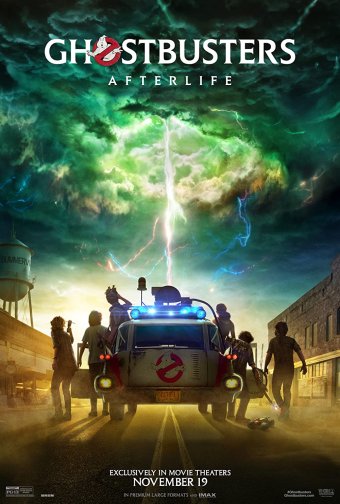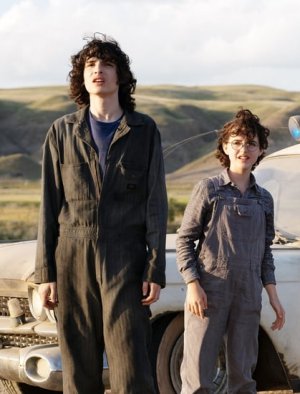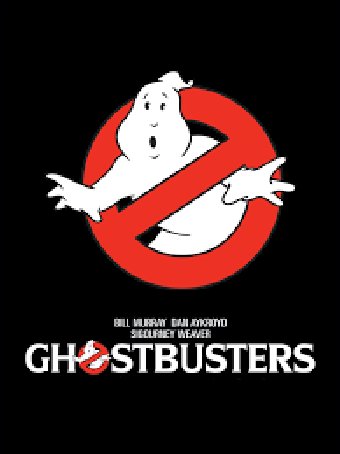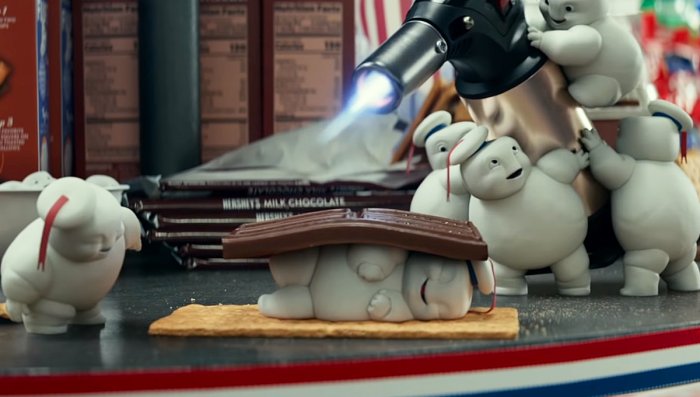A Tale Of Two Ghostbusters
January 6, 2022 by Rudy Panucci Longtime readers of PopCult may remember back when the Paul Feig, female-led reboot of Ghostbusters was released five and a half years ago, I wrote about why I had little interest in seeing it. I laid out all those reason HERE, and if I say so myself, it looks like my analysis was solid and my predictions came true. In the intervening years I have seen most of the 2016 Ghostbusters on various cable channels, and I have to say I found it to be really bad–worse than Holmes and Watson bad.
Longtime readers of PopCult may remember back when the Paul Feig, female-led reboot of Ghostbusters was released five and a half years ago, I wrote about why I had little interest in seeing it. I laid out all those reason HERE, and if I say so myself, it looks like my analysis was solid and my predictions came true. In the intervening years I have seen most of the 2016 Ghostbusters on various cable channels, and I have to say I found it to be really bad–worse than Holmes and Watson bad.
I’m a fan of the original 1984 Ghostbusters. It connected with millions of people over the years because it pretty much got everything right. It had top comedy stars, but was not a straight comedy movie. It was a light horror movie with comic elements, provided by a cast who could handle both comedy and dramatic acting. That was just part of the formula for success, but I mention it here because it helps explain why the 2016 Ghostubsters reboot was a remarkable failure, and why Ghostbusters: Afterlife is such a rousing success.
At this point, I’ll give you the SPOILER WARNING, because I’m going to be liberally discussing plot points for the rest of this post.
 I am on record as not being a fan of the cast of the 2016 reboot, but I don’t blame the cast for the failure of the film. The 2016 Ghostbusters was ill-conceived at every step of the creative process. I still cannot fathom why they decided to do a reboot and pretend that the first movie didn’t exist, all the while referencing it every five minutes or so. Fans of the original couldn’t help but be offended by that decision. Choosing Paul Feig to direct–and he didn’t even really want the job–was another major disconnect. Feig had risen from the ranks of sitcoms to direct a few slapstick comedies, but hadn’t shown much range, and had zero experience directing a horror film.
I am on record as not being a fan of the cast of the 2016 reboot, but I don’t blame the cast for the failure of the film. The 2016 Ghostbusters was ill-conceived at every step of the creative process. I still cannot fathom why they decided to do a reboot and pretend that the first movie didn’t exist, all the while referencing it every five minutes or so. Fans of the original couldn’t help but be offended by that decision. Choosing Paul Feig to direct–and he didn’t even really want the job–was another major disconnect. Feig had risen from the ranks of sitcoms to direct a few slapstick comedies, but hadn’t shown much range, and had zero experience directing a horror film.
The Ghostbusters reboot was spearheaded by executives and producers who thought that the original movie was a zany comedy. It was not. It was a horror movie with lots of comedic elements, but what made it work was the balance between the two. With no balance, the movie would have sunk like a stone. Ivan Reitman, the director of the original Ghostbusters, knew this, and he had experience directing and producing horror films like Cannibal Girls, and David Cronenberg’s early horror classics, Rabid and Shivers. Feig was pretty much a one-trick pony who specialized in zany comedies where people crap all over themselves. His choice to direct the reboot showed that the executives at Sony Pictures had no clue why the original movie was a hit.
On the other hand, perhaps having learned their lessons (and replaced those executives), Sony made the right calls with Ghostbusters: Afterlife. The film was to be a true sequel, set in the world of the original Ghostbusters movies, instead of a reboot, and they managed to hire Jason Reitman, son of Ivan, and an acclaimed filmmaker in his own right, to direct and co-write.
Ghostbusters: Afterlife is everything that a loyal fan of Ghostbusters could want. It respects the original movie. It focuses more on the story than on the gags. We get to see all the original Ghostbusters in action, unlike the cameos that squandered the original cast in different roles in the 2016 debacle. There are call-backs to the original story and the original villain. Most importantly, we get new, young characters to care about, instead of abrasive cardboard cut-out stereotypes.
 The movie picks up logical threads from the original two films, and weaves compelling and exciting story. The cast is amazing. Carrie Coon is perfect as Callie Spengler, the abandoned daughter of Egon Spengler, emotionally numb and drifting while trying to raise two kids. The kids, grandchildren of a Ghostbuster who have no idea of their legacy, are well-developed and wonderfully-acted. Finn Wolfhard, from Stranger Things, is great as the 15-year-old gearhead, Trevor, while McKenna Grace embodies the social awkwardness of Harold Ramis’ Egon, while adding new quirks as his granddaughter Phoebe, the de-facto star of the movie. Paul Rudd, as a summer-school teacher interested in Callie, provides some great comic relief without resorting to cheap, lowest-common-denominator antics.
The movie picks up logical threads from the original two films, and weaves compelling and exciting story. The cast is amazing. Carrie Coon is perfect as Callie Spengler, the abandoned daughter of Egon Spengler, emotionally numb and drifting while trying to raise two kids. The kids, grandchildren of a Ghostbuster who have no idea of their legacy, are well-developed and wonderfully-acted. Finn Wolfhard, from Stranger Things, is great as the 15-year-old gearhead, Trevor, while McKenna Grace embodies the social awkwardness of Harold Ramis’ Egon, while adding new quirks as his granddaughter Phoebe, the de-facto star of the movie. Paul Rudd, as a summer-school teacher interested in Callie, provides some great comic relief without resorting to cheap, lowest-common-denominator antics.
There are fantastic action sequences and great special effects, and plenty of tear-jerking moments as well. Ghostbusters: Afterlife is a more sedate movie than the original film, but it works perfectly since that movie was a product of its time, and four decades have passed since it came out.
 Another key point that makes Ghostbusters: Afterlife work is that the movie understands the role of each of the original Ghostbusters, and the story plays off of their personal interactions. We see that Dan Ackroyd’s Ray Stanz was the most innocent and naive of the team, but he was also the least competent. Bill Murray’s Peter Venkman was the wise-cracking, cynical sarcastic, marketing guy, and we learn that he’s become a professor of advertising. Ernie Hudson’s Winston Zeddemore is the workhorse of the group, who manages to become very successful and secretly keeps the other three afloat, financially.
Another key point that makes Ghostbusters: Afterlife work is that the movie understands the role of each of the original Ghostbusters, and the story plays off of their personal interactions. We see that Dan Ackroyd’s Ray Stanz was the most innocent and naive of the team, but he was also the least competent. Bill Murray’s Peter Venkman was the wise-cracking, cynical sarcastic, marketing guy, and we learn that he’s become a professor of advertising. Ernie Hudson’s Winston Zeddemore is the workhorse of the group, who manages to become very successful and secretly keeps the other three afloat, financially.
The big reveal and surprise of Ghostbusters: Afterlife is the presence of Harold Ramis’ Egon Spengler, courtesy of body doubles and digital effects. We see that Spengler is the only Ghostbuster who truly understood the scope of the original prophecies of Gozer, and that the threat was not yet over.
It works, and it gives us a great story that is worthy of the Ghostbusters legacy.
The film is a passing of the torch to a new generation, and it’s left wide-open for a sequel. The question of what happened to Dana Barrett’s son, Oscar, is not addressed, so that’s still out there as a story idea, and a post-credit scene shows that Winston has re-acquired the firehouse, and has the Ecto-1 restored and parked there.
One other nice nod to reality is the way that, in the movie, the original Ghostbusters incident in New York has been relegated to the fringes of YouTube, as some sort of semi-Urban Legend that people don’t remember clearly. After seeing how severely folks have been re-writing the events of a year ago today, this turned out to be a very astute observation.
The main reason I’m writing about this (aside from the fact that the movie just came out digitally this week, and I’m still not going to theaters because of the pandemic so I just saw it) is that I read a negative review of the film in another blog yesterday, and was struck by how wrong-headed and nit-picky it was, with totally invalid criticisms and ridiculous claims. I’m not going to embarrass the author with a link, but among his complaints were that they didn’t give the population of the small town in Oklahoma where the action takes place (it’s obviously a small town “in the middle of nowhere”): a scene in Walmart doesn’t have enough people in it (clearly the author has never been to a small town Walmart late at night); the guy lists several other “strikes” against the film which aren’t actually strikes. I think maybe this might have been a person who acted as one of the cheerleaders for the 2016 reboot, who was just determined to hate on this film, where they got everything right. Notably, he closed comments on that particular post.
For me, I found Ghostbusters: Afterlife to be everything it needed to be, with the perfect balance of action, humor, drama and special effects. Plus we get those cute little Stay Puft Marshmallow men running all over the place.

 Subscribe to PopCult
Subscribe to PopCult
